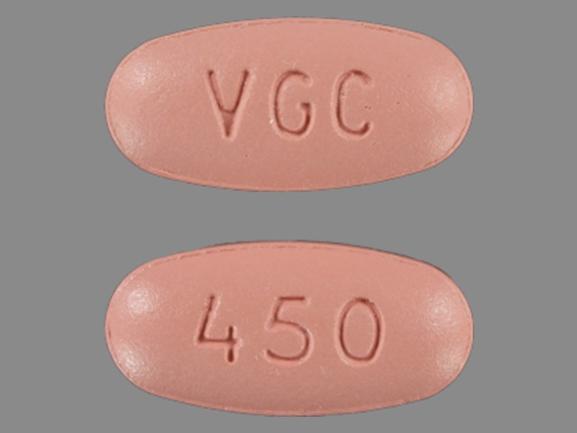Valcyte and Alcohol/Food Interactions
There is 1 alcohol/food/lifestyle interaction with Valcyte (valganciclovir).
Valganciclovir Food/Lifestyle
Moderate Food Interaction
ADJUST DOSING INTERVAL: Food increases the bioavailability of ganciclovir from the prodrug, valganciclovir. In 16 HIV-positive subjects, the administration of valganciclovir 875 mg once daily with a high-fat meal containing approximately 600 calories resulted in a 30% increase in the steady-state area under the plasma concentration-time curve (AUC) and a 14% increase in the peak plasma concentration (Cmax) of ganciclovir, with no delay in the time to reach peak plasma concentration (Tmax). The mechanism is unknown.
MANAGEMENT: The manufacturer recommends that valganciclovir be taken with meals.
References (2)
- (2001) "Product Information. Valcyte (valganciclovir)." Roche Laboratories
- Brown F, Banken L, Saywell K, Arum I (1999) "Pharmacokinetics of valganciclovir and ganciclovir following multiple oral dosages of valganciclovir in HIV- and CMV-seropositiv volunteers." Clin Pharmacokinet, 37, p. 167-76
Switch to consumer interaction data
Valcyte drug interactions
There are 274 drug interactions with Valcyte (valganciclovir).
Valcyte disease interactions
There are 3 disease interactions with Valcyte (valganciclovir) which include:
More about Valcyte (valganciclovir)
- Valcyte consumer information
- Check interactions
- Compare alternatives
- Pricing & coupons
- Reviews (2)
- Drug images
- Side effects
- Dosage information
- During pregnancy
- Generic availability
- Drug class: purine nucleosides
- Breastfeeding
- En español
Related treatment guides
Drug Interaction Classification
| Highly clinically significant. Avoid combinations; the risk of the interaction outweighs the benefit. | |
| Moderately clinically significant. Usually avoid combinations; use it only under special circumstances. | |
| Minimally clinically significant. Minimize risk; assess risk and consider an alternative drug, take steps to circumvent the interaction risk and/or institute a monitoring plan. | |
| No interaction information available. |
See also:
Further information
Always consult your healthcare provider to ensure the information displayed on this page applies to your personal circumstances.


